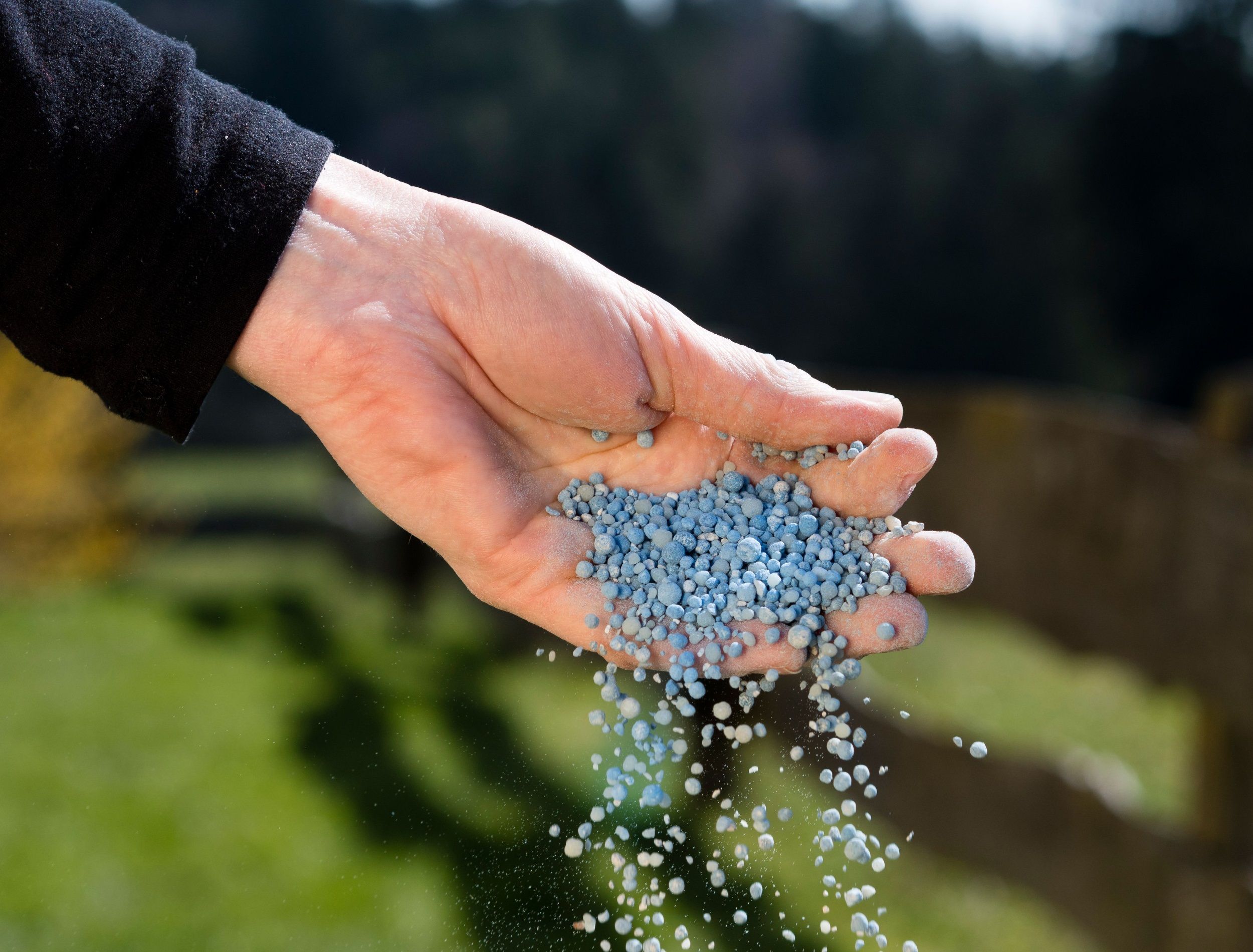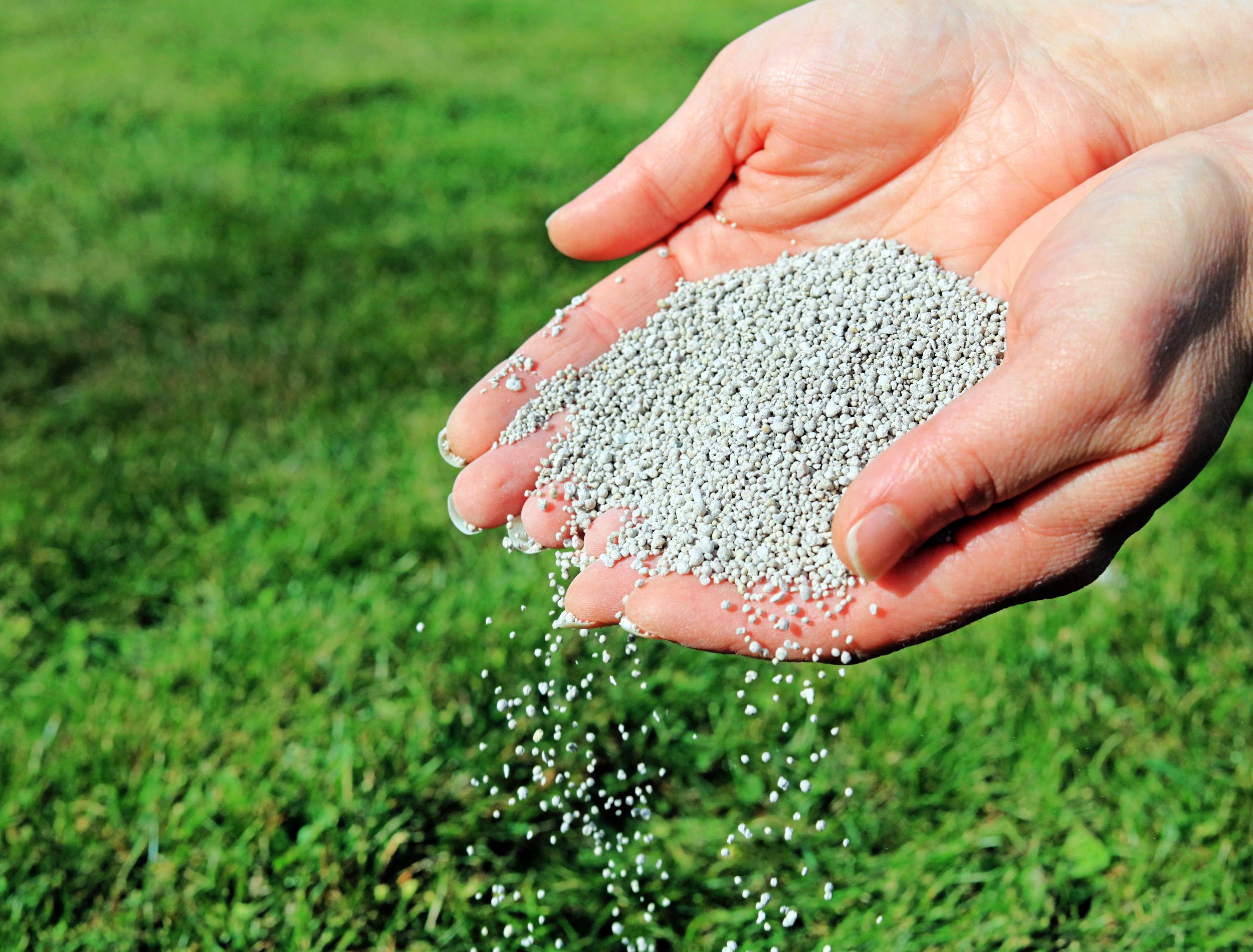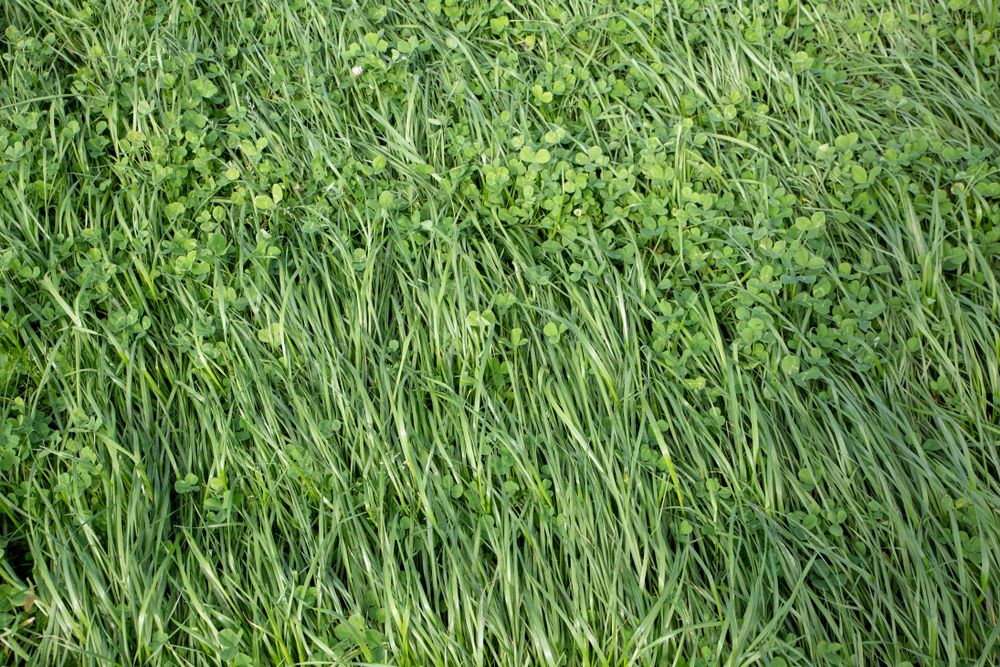A lush and healthy lawn is the pride of every homeowner, and fertilizing is an essential aspect of achieving that. Fertilizers provide the necessary nutrients to your lawn, making it healthy, green, and vibrant. However, fertilizing too often or too little can cause more harm than good. Therefore, it's crucial to know how often you should fertilize to ensure its health and longevity.
Explore the factors to consider when fertilizing and discover tips for applying fertilizer to do it right, avoiding damaging your lawn!
The Importance of Fertilizing
Image credits: Dean Clarke via Shutterstock
Before learning when you should fertilize your lawn, you must first understand the importance of this practice.
Fertilizing provides the nutrients your grass needs to grow healthy and strong. Fertilizers contain essential elements such as nitrogen, phosphorus, and potassium for healthy root development, lush green growth, and improved resistance to pests and diseases.
Regular fertilization helps to maintain a balanced soil pH, which is critical for nutrient uptake and overall health. Fertilizing your lawn ensures that it maintains dense coverage, reducing the chances of weed infestations and erosion.
How Often Should You Fertilize Your Lawn
Image credits: Imagineses via Canva
The frequency of fertilizing your lawn largely depends on several factors, such as soil type, grass type, climate, and nutrient requirements. To briefly answer the question, most lawns benefit from fertilization at least once or twice a year during the spring and fall seasons. However, it's essential to understand that different grass types have varying nutrient requirements, which affect how often you should fertilize them.
Factors to Consider
Below are three factors to consider when fertilizing your lawn. This will help you narrow down your lawn type so you can decide on the best fertilizer for your green haven!
Grass Variety
Image credits: Sheryl Watson via Shutterstock
Grass type is crucial in determining how often you should fertilize your lawn. Different grass types have varying nutrient requirements, which affect their growth rate and overall health.
Warm-season grasses, such as Bermuda, St. Augustine, or zoysia, are generally more aggressive and require fertilization during the active growing season, typically during the summer. On the other hand, cool-season grasses, such as Kentucky bluegrass, perennial rye grass, or fescue, have a slower growth rate and grow energetically in winter. Therefore, they require fertilization during the fall seasons. However, if they do not look their best, you can fertilize them again from late spring to early summer.
Over-fertilizing or under-fertilizing your lawn can lead to various problems, such as nutrient deficiencies, excessive thatch buildup, and susceptibility to disease and pest infestations. Thus, it's essential to know the grass type on your lawn and the recommended fertilization schedule for optimal growth and health. And as always, read the instructions on the bag properly before starting your application.
Soil Type
Image credits: Pau Buera via Shutterstock
The soil's nutrient content, pH level, and texture affect its ability to hold and release nutrients to your grass. For instance, sandy soils drain quickly and have a low nutrient-holding capacity, which requires frequent fertilization to maintain the soil's nutrient balance. Conversely, clay soils have a higher nutrient-holding and require less regular fertilization.
The soil's pH level affects nutrient availability, as some nutrients become less available at extreme pH levels. Conducting a soil test can help determine the soil's nutrient content, pH level, and other factors that affect your lawn's health. Based on the soil type, you can adjust the fertilization schedule and choose the appropriate fertilizers to achieve optimal growth and strength for your lawn.
Climate and Weather
Image credits: indigolotos via Canva
The amount and frequency of rainfall, temperature, and humidity affect the grass's nutrient uptake and growth rate. For instance, during hot and dry weather conditions, grasses go dormant, requiring less systematic fertilization. On the other hand, during periods of heavy rainfall or frequent watering, nutrients can leach out of the soil, requiring more fertilization to maintain the nutrient balance.
Different regions have diverse climates and weather patterns, which can affect the grass's nutrient requirements. Therefore, consider the climate and weather conditions and adjust the fertilization schedule accordingly. Consulting a local lawn care expert can also provide valuable insights on the best fertilization practices for your lawn based on the local climate and weather patterns.
How to Apply Fertilizer Correctly
Image credits: groveb via Canva
To apply fertilizer evenly, use a broadcast or drop spreader, depending on the size of your lawn. Set the spreader's application rate to match the recommended fertilizer application rate. Then, apply fertilizer in a crisscross pattern, starting from one corner, and moving to the other, ensuring complete coverage.
Avoid applying fertilizer near water bodies or drainage areas, as it can contaminate water sources and harm aquatic life. Wear protective clothing, such as gloves and goggles, as it can irritate the skin and eyes.
Additionally, store fertilizers in a cool and dry place, away from children and pets, to prevent accidental ingestion. Lastly, choose environmentally friendly fertilizers and avoid over-application, which can lead to fertilizer runoff and pollution.
By following these tips, you can ensure the safe, even, and environmentally responsible application of fertilizers to your lawn.
Healthy Lawn, Happy Home
Fertilizing your lawn is critical in maintaining its health and vibrant look. The frequency of fertilization depends on several factors, including grass type, soil type, and climate. By considering these factors and following recommended fertilization guidelines, you can ensure your lawn receives the necessary nutrients for optimal growth and health.
Applying fertilizer correctly is also essential in protecting the environment and avoiding fertilizer runoff. Regular fertilization can help you achieve a lush lawn that you can enjoy year-round!
Love these tips and tricks to fertilizing your lawn? Then share this article with your friends and family!







